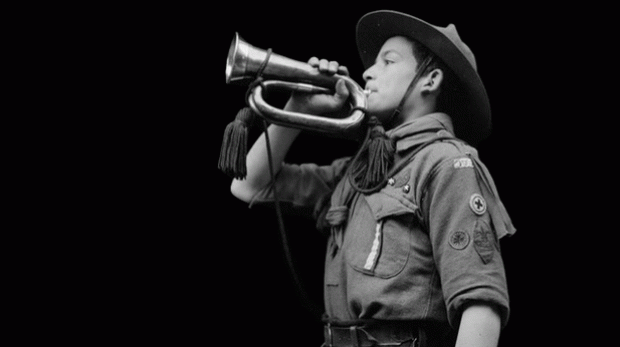The First World War, which changed the course of history and the map of the world, also involved a concerted deployment of forces. Children, young people, and adults, whether men or women, were convinced through recruitment drives and other means to help on the frontlines or behind them. Hundreds of thousands of children under the age of 19, some of them part of the Scouts, have shown unsurpassed courage and loyalty in the face of danger.
In Romania, the first Scouts were organized in 1913, at the Gheorghe Lazăr High School in Bucharest, and its namesakes in Sinaia, Braşov and Blaj. Princes Carol and Nicholas were also part of the Scouts, as the organization was supported by King Carol I, delighted by the new institution.

The Romanian Scouts Association, which was recognized as a legal entity in 1915, aimed at strengthening the moral and physical wellbeing of young people, as well as their love for the homeland. Their motto was to be “Ready anytime!” to serve, to help and to do a good deed every day; the so-called Scout’s law, as it was known.
Under the leadership of Prince Carol, Commander of the Great Scouts Legion of Romania, the movement, made up of commanders, instructors, scouts and falconets (children between 7 and 11), grew in numbers. A scouting book was also produced, the authors being professor Gh. D. Mugur and engineer C. Niculescu. It contained on each page sayings from Nicolae Iorga, and at the end of the book, medical advice, the Morse alphabet and the names of the 34 legions that made up the Great Scouts Legion in 1916.
Romania’s entry into the great conflagration also meant the mobilization of Scout detachments, represented by the War Scouts Corps. They were being readied for auxiliary services, where they fulfilled their duty with abnegation, alongside the Red Cross, the Post, the Police, and other state institutions.
The first departure of the Scouts from Bucharest was at the end of the autumn of 1916. Without knowing what to expect, the Scouts of the Bucur the Shepherd cohort left for Moldavia, along with colleagues from other localities. There were about 200 young people. 60 of them walked to Ploieşti, where they took the train to Vaslui, where they arrived after five days. They camped at Soleşti, where they formed a division. A few months later, they went to Sculeni, where the nearest hospital was. There were 147 scouts, of whom 102 were high school students, and they organized as they would have in peacetime: they set up an outdoor school, but they also did gardening. Many of the 17-year-olds left on the 1st of January for Botoșani, where they enrolled at the Infantry Training School. Others went to the front as liaison officers or to hospitals. 70 of them were sent to the auxiliary services of the 13th Division, being part of the General Headquarters Reserve. The 12th Division took part in the most dramatic moments in Mărășești. As a result of their actions, in 1918 the services and efforts of the Scouts were officially recognized. The elders who heard them singing said “We cannot perish if we have such enthusiastic young people”.
Many of these young people died, especially the medic Scouts, who during the typhus epidemic took care of the sick. At the end of the war, they returned home, confessing: “The trenches and shelters seem untouched, but they keep something from the soul of those who lived and defended them”.
On December 1, 1918, the Romanian and Allied armies entered Bucharest. As a sign of appreciation for the sacrifice of the Scouts during the war, King Ferdinand placed them at the head of the marching troops and decorated them with the 1916-1918 Memorial Cross and the Victoria Medal, and in 1923 the Scout Statue, in Tecuci, was erected in their memory.
Translated by Laurențiu Dumitru Dologa

